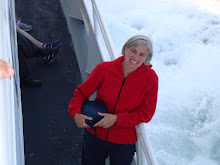KN: On your website, http://www.ellenbooraem.com/evolution.html, you have a fantastic description of Medford and Goatman’s development from paintings into characters. However, there are many other outstanding characters in The Unnameables. What did you do to bring each character alive?
EB: When I’m starting a book, I have a form I fill out for important characters, asking questions about their hopes and fears, even what they have in their pockets.
When characters first appear in a rough draft, I let them speak and act for themselves, doing whatever is required of them to move the plot along. When I’m ready to delve deeper—later in the rough draft and certainly during the revisions—I open a new document for each important character and write a brief life story, including his or her fears and goals, and often a journal entry in that character’s voice. When I was writing THE UNNAMEABLES, I did this at least once for Earnest, Boyce, Essence, Twig, Clarity, Arvid, and Deemer—and repeatedly for Medford, Prudy, and the Goatman.
I had a separate document telling me what everyone looked like. For a few characters, I had other documents tracking their mood changes throughout the book—especially important for Earnest, Prudy, and Twig, whose intentions and activities were hidden until the end.
KN: What a fantastic answer! I'll have to use those techniques to strengthen my characters. Why did you choose to have the island stuck in the colonial period versus another historical era?
EB: As a purely practical matter, I needed the original settlers to take over a distant, empty island and then be ignored or forgotten long enough to figure out their needs and obsessions on their own. That wouldn’t have happened as easily with a later settlement, especially after transportation became easier and faster.
In my head (not stated in the book), the original settlers were disaffected members of the Massachusetts Bay Colony. They’d be adventuresome by nature—having uprooted themselves once to sail from England to Massachusetts, it wouldn’t faze them to do it again. It made sense to me that they would have tired of the religious and social restrictions in Massachusetts, and would have tried to find a place where they could live according to their utopian ideals. And of course they ended up creating a society that was even more restrictive than the one they’d left.
I drafted a sequel that offered an explanation of why the Islanders continued to be left alone to the modern day. That draft is pretty much dead now because of changes in the first book, but I hope to revive parts of it someday so I don’t want to give much away. If you look at the map in THE UNNAMEABLES, though, you can see that the shoals around Island make it inhospitable to the casual visitor.
KN: In addition to the tremendous amount of historical research to inform your language style in the book, what else did you do to make sure the character’s voices were consistent throughout the book?
EB: Every morning before I started to write, I would read a chapter of one of Jane Austen’s books, which were written in the early 1800s. That set me up for the narrator’s voice and the way Islanders talked when they weren’t using Book Talk. Before writing dialogue in Book Talk, I’d dip into Samuel Pepys’s diary, written in the mid-1600s, and maybe the King James Bible or some plays from the mid- to late 1600s.
To make sure I had individual characters’ voices right, I would occasionally break away and read the journal entries I’d written for them, or maybe write a line or two more in a journal. After a while, though, I had each character so firmly fixed in my mind that their voices came naturally to me.
These were great questions, a lot of fun to answer. Thanks so much for asking them!
KN: Thank you for answering them.
Subscribe to:
Post Comments (Atom)

No comments:
Post a Comment